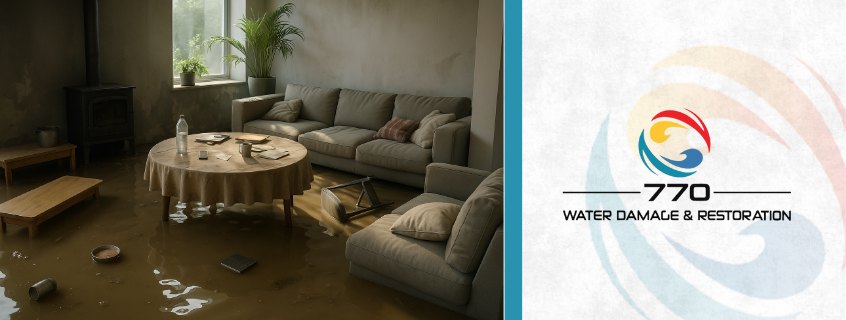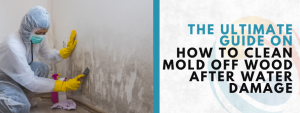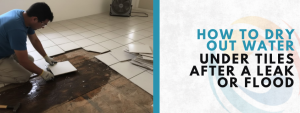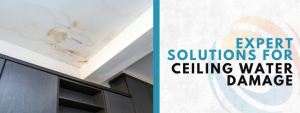
There’s a certain comfort we feel when we walk into our closet, inhale, and smell nothing but fresh cotton, warm linen, and the scent of clean clothes. But what if one day, that air feels a little heavy? A bit humid? If your closet air feels damp, it might not just be your imagination. This blog dives into the five quiet warning signs that could point to a bigger problem hiding behind your closet walls.
Closets aren’t supposed to feel like mini-saunas. When that slight stickiness creeps in, it’s easy to brush off. Maybe the weather changed, or perhaps it’s just the laundry. But ignoring the fact that your closet air feels damp could leave you with ruined clothing, unpleasant smells, and even mold. Let’s uncover the five subtle but serious red flags that demand your attention before it’s too late.
1. That “Not Quite Fresh” Smell Keeps Coming Back
You open your closet, expecting to smell your fabric softener or cedar blocks—but something else greets your nose. A musty, earthy odor. It’s not strong, but it keeps coming back no matter how many times you clean.
That odor is one of the earliest—and sneakiest—signs that something’s off. A closet air feels damp scenario is often linked to trapped moisture, which creates the perfect home for mildew. And mildew doesn’t always show up visibly at first. Sometimes, the smell is your only clue.
Here’s why that smell matters:
- Mold spores often spread through the air before they form colonies on fabric or walls.
- Moisture can build behind drywall or under floors, causing ongoing dampness.
- Constant humidity attracts dust mites and other allergens.
If your closet smells stale, even with the door open, take it seriously.
Watch for:
- Faint earthy or sour smell after rain
- Odors that get worse with the door closed
- Fabric that smells “old” even when washed
A helpful solution is getting a humidity gauge. If the reading stays above 60%, there’s more going on behind the scenes.
Tip: Try leaving a small dish of baking soda or activated charcoal inside the closet. If the smell doesn’t go away in a few days, your closet air feels damp and needs professional help.
2. Your Clothes Feel “Clammy” or Take Forever to Dry
Ever pulled out a shirt only to find it feeling slightly damp? That’s a sure sign your closet has more moisture than it should. It’s common to blame it on washing machines or not drying clothes enough—but this can also mean the surrounding air is the issue.
A closet air feels damp; condition messes with fabric in more ways than one. Moisture clings to cloth fibers, making them feel cool, sticky, or heavy—even if they’re clean.
Here’s what you might notice:
- Towels or sweaters feel damp even when unused
- Clothes left out take longer to dry
- Leather shoes start to warp or smell
Quick Fabric Trouble Checklist:
| Sign | Likely Cause |
| Cold or clammy feeling clothes | High humidity trapped in the closet |
| Yellowing on fabric edges | Moisture damage or mildew |
| Persistent odors | Bacteria or mold growth from dampness |
Dryers aren’t always to blame. If the rest of your home feels dry but your closet doesn’t, that’s a red flag that the humidity is isolated.
Did you know? Homes with minor plumbing leaks or poor insulation can cause local moisture buildup—especially in closets without airflow. This often leads to needing professional water damage restoration if ignored too long.
3. You Spot Tiny Specks or Dark Stains on Walls or Ceilings
At first glance, they look like dust or dirt. Maybe little smudges near the ceiling. But if your closet air feels damp, those “harmless” dots might be something worse: mold.
Mold starts small. It often appears in corners or near baseboards—out of direct sight. And by the time it becomes visible, it’s already growing behind the scenes. Your closet may have weak ventilation, allowing spores to thrive unnoticed.
Common Mold Hiding Spots:
- Ceiling corners
- Around vents or baseboards
- On the back wall near exterior-facing sides
- On wooden shelving or particleboard
If you see any of the following, don’t ignore it:
- Black dots clustering in corners
- Yellowish patches on the wall
- Fluffy white patches that grow with time
- Paint bubbling or peeling slightly
Even painted closets aren’t immune. Moist air seeps into drywall, causing bubbling, flaking, or slow deterioration. Eventually, this leads to major water damage that demands costly repairs.
Reminder: Spotting mold means the situation has already escalated. For full protection, it’s worth exploring expert restoration services before the issue spreads beyond your closet.
4. Your Closet Feels Warmer Than the Rest of the Room
This is one sign that often gets overlooked. If your closet is warmer or more humid than the rest of your home—even without any heat sources—pay attention. It might not be temperature, but rather humidity, causing that difference.
When closet air feels damp, the trapped moisture increases thermal retention. This means it feels warmer than it is, which can be misleading. The feeling of “warm air” is often a symptom of high humidity and poor air circulation.
Check for These Heat Triggers:
- No air vents or return ducts in the closet
- Light fixtures producing heat with poor ventilation
- Exterior-facing walls pulling in outdoor humidity
- Doors kept shut for long periods
Closet Health Temperature Guide:
| Condition | Optimal Range |
| Closet humidity | 40–60% |
| Closet temperature | 60–70°F |
| Airflow | Steady circulation (vent or louvered door recommended) |
If you’re keeping your door closed to “trap” nice smells or to hide clutter, consider cracking it open or installing slatted doors for improved air movement. It could be all you need to prevent mildew from sneaking in.
Action Tip: Hold your hand near the top of the closet ceiling. If the air feels noticeably warmer than your bedroom ceiling, your closet air feels damp and may be trapping rising heat and moisture.
5. Wood, Paint, or Walls Start Warping, Peeling, or Cracking
When moisture lingers in a space, even subtle signs show up in the building materials. Wood expands and warps. Paint bubbles or flakes. Drywall softens or discolors. These changes might not be dramatic—but they’re signs your closet is suffering long-term exposure to damp conditions.
When closet air feels damp over time, it doesn’t just affect clothes. It seeps into every surface.
Visible Damage You Shouldn’t Ignore:
- Wooden shelves that look slightly bowed or curved
- White powdery residue on the wall (efflorescence)
- Peeling paint strips near baseboards or ceiling edges
- Cracks forming between wall joints or where shelves meet
Moisture Damage Checklist:
- Baseboards feel soft or look discolored
- Closet ceiling shows yellow or brown rings
- Caulking around the closet base is separating
- Shelves sag or show dark marks underneath
If you check off any two of these, your closet needs attention fast.
Fact: A single small leak behind your closet wall could take weeks or months to show—but by the time your walls warp, moisture damage has already set in. That’s why prompt detection and early fixes are key. In advanced cases, calling in local restoration pros might be your best route.
Extra Prevention Tips You Can Start Right Now
Sometimes, the fix doesn’t need a contractor—just smart habits. Here are easy ways to prevent your closet from becoming a moisture magnet:
A. Add Natural Moisture Absorbers:
- Activated charcoal bags
- Baking soda bowls
- Cedar blocks or balls
B. Improve Ventilation:
- Install a louvered or slatted closet door
- Use a battery-powered mini fan or closet dehumidifier
- Keep the door ajar slightly during the day
C. Monitor and Control Humidity:
- Buy a small digital hygrometer for real-time tracking
- Use moisture-proof bins for seasonal clothing
- Avoid putting slightly damp laundry inside
D. Use Strategic Shelving Materials:
- Stick with metal or wire shelves instead of wood
- Line wooden surfaces with moisture-resistant mats
- Elevate shoes or bins off the floor
E. Keep an Eye on What You Store:
| Item | Best Storage Method |
| Leather shoes | In breathable bags with cedar |
| Wool sweaters | Folded in plastic bins with dry packs |
| Handbags | Hung with silica packets inside |
| Spare linens | Stored on top shelves with airflow gaps |
When It’s Time to Call the Experts
Your home’s closet is supposed to protect your things—not become a source of hidden damage. If your closet air feels damp and you’ve tried the usual fixes with no luck, there may be a deeper issue like hidden leaks, poor insulation, or structural moisture problems. These often aren’t visible until they’ve already caused thousands in property damage.
Don’t wait until mold creeps into your bedroom or your flooring starts buckling. A professional inspection can help catch problems before they escalate. Whether it’s subtle signs of moisture or visible damage, seeking out a reliable restoration team ensures you protect your space and everything in it.
The Bottom Line
Noticing your closet air feels damp isn’t just a weird observation—it’s a warning sign. From strange smells and damp fabrics to peeling paint and hidden mold, closets are silent messengers when moisture sneaks in. Paying attention to these five subtle signs can save your clothes, your health, and even your home’s structure.
If you suspect your closet’s moisture issues are beyond surface-level fixes, don’t ignore it. Take proactive steps, stay alert to red flags, and call in experts when necessary. It could make all the difference between a fresh-smelling home and a costly restoration job down the line.
Frequently Asked Questions (FAQs) About Damp Closet Air
Why does my closet air feel damp even when my home feels dry?
Closets often lack proper ventilation, causing moisture to get trapped and build up. Even small leaks or outside humidity can make closet air feel damp while the rest of your home stays dry.
How can I tell if my closet has mold or mildew?
Check for musty odors, dark spots on walls or ceilings, and clothes that feel clammy. Mold usually starts in hidden areas and spreads quickly if left untreated.
Will a dehumidifier fix my damp closet issue?
A small dehumidifier can help reduce moisture, but it may not fix the root problem. It’s best used alongside proper ventilation and moisture source checks.
Can my stored clothes get damaged from damp closet air?
Yes, moisture can lead to mildew stains, unpleasant smells, and even fabric rot. Leather and wool items are especially vulnerable to long-term damage.
Should I call a professional if my closet smells musty or shows signs of moisture?
If cleaning and dehumidifying don’t solve the issue, it’s time to call an expert. Hidden water damage or leaks may need professional restoration to prevent serious problems.






